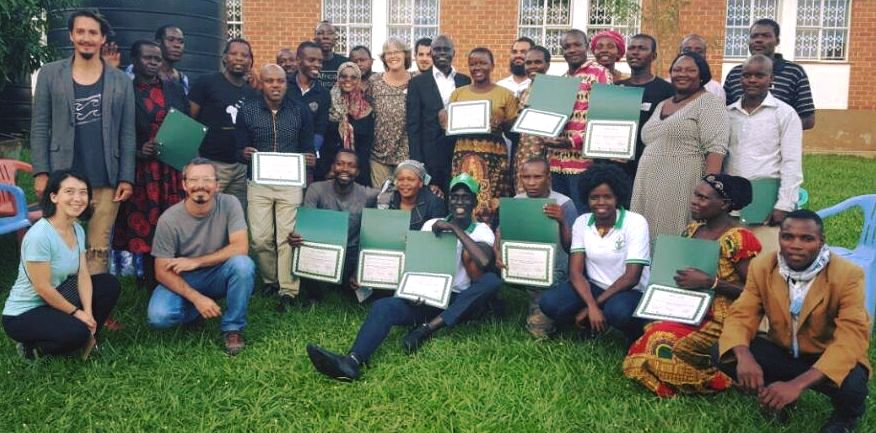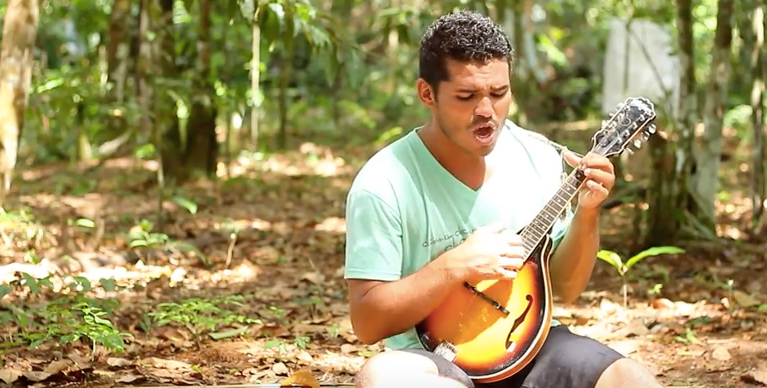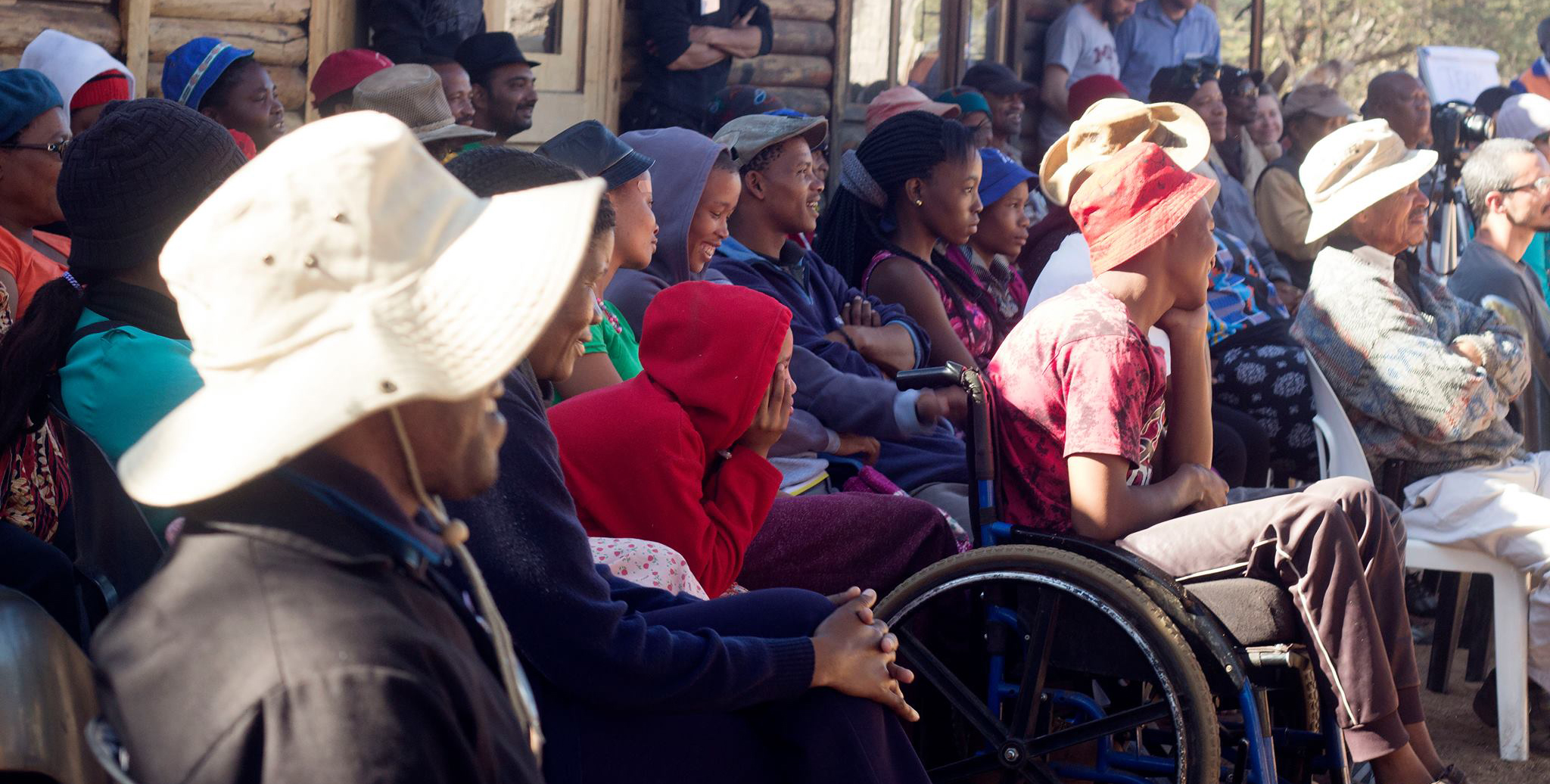Reflections from a Creative Capacity Building (CCB) Training of Trainers (ToT) in Uganda

I am struck by the sight of everyone working, or “making” as it’s often called now. They are building with wood, metal, natural materials, and other random items that the project teams picked up in town yesterday. What I see is that making is the place of everyone here, regardless of gender or age. I am immersed in a community-level design training model called Creative Capacity Building (CCB), developed largely by Amy Smith of MIT’s D-Lab and led here by her and Bernard Kiwia. CCB is typically a 5-day hands-on workshop where participants learn the basic stages of the design cycle. They then put it into practice as they work in teams to go through at least one round of the design cycle and prototype a technology by the end of the 5 days. There are several hands-on sessions where we build a maize sheller (exactly what it sounds like) and a charcoal press that can be used to form briquettes from charcoal dust; these activities are designed to teach a set of basic skills in wood working, metal working, and the use of various hand tools while also giving participants a useful technology to take home.
Generally, CCB training is offered by trainer(s) at a very local level as a mechanism for spurring and supporting local innovation. (I’m using local to describe village- or community-scale). This particular CCB is unique in that it is a training of trainers (ToT). Most of us are not only acting as participants (meaning we work in teams and design and build prototypes), but we are also here with the intention of improving our facilitation abilities. As such, we have a program of group reflection and practice teaching that’s going on around the edges of the CCB. Our ToT is held at Kulika Uganda’s training center outside of Wakiso, Uganda. Most of these current or prospective trainers are individuals who are currently facilitating trainings elsewhere, hope to be a trainer/co-trainer in the future, or want to be otherwise involved with CCB activities. This week, the majority of current or prospective trainers are from Uganda because that’s where we are, but we also have people from several other African countries, several Central and South American countries, one Greek and a few from the U.S.
Over the last few years, I have been intentionally studying equity, diversity and inclusion (EDI). I aspire to improve equity, diversity and inclusion at various levels within my own university which includes my day-to-day work environment. I’ve gained much more awareness of how interpersonal conversations, group dynamics, leadership, and policies can serve to either increase or decrease inclusivity. What I see at this Creative Capacity Building (CCB) Training of Trainers is in fact a striking model of inclusion. The visceral sense of everyone working and everyone being equally valued regardless of race, gender, status, and level of education, is not unique to CCB; I have also seen it and lived it at longer hands-on design summits that, like CCB, are also associated with MIT’s D-Lab and the International Development Innovation Network (IDIN). Usually, because a CCB training is such a local event, it would not have the diversity in nationalities that we have at this event, but it would have both women and men. In cultures where there are deeply rooted gender roles, women are not often encouraged to be on equal footing with the men as “makers”. But in a CCB training, full participation is simply expected from both genders. Preliminary studies of impact do show that CCB training can raise womens’ profiles as women take on greater leadership responsibilities or design and use technologies that reduce their labor, increase their income, or simply make life better
This week, we had about 10 community members who live nearby join our CCB training of trainers. Thus, our project teams had both trainers and local community members. Our teams produced prototypes of a solar dryer, a vegetable slicer, a sorghum thresher, a hands-free latrine cover, a passion fruit juicer and a few others. I confess to not believing what could be envisioned and built in just a few days; all the teams had a somewhat working prototype by the end of the five days. Most of our concepts went through an iteration or two, and we even had a chance to get feedback from the type of person who might use our technologies through both internal and external showcases with our project prototypes.
We learn by experience that the design process requires faith. Not religious faith, but rather faith that applying the design cycle to real-world problems will produce a solution or technology towards solving that problem. And faith that all individuals are capable of improving their lives through creativity and innovation. I’m very curious – what happens after a CCB training? Do people just walk away unchanged? Do they continue to innovate and build devices or technologies? I’m sure many do walk away, but this week we witnessed groups coming from all over Uganda to demonstrate and celebrate the technologies they created and iterated post-CCB. When I was looking over my pictures, the one commonality I saw during presentations from these visiting groups was a sense of pride.
I know that many of the people at our training of trainers (including the innovators that joined us from both near and far) have not had it easy. Design, or the use of design, can’t solve everything. But my takeaway from this week is that design and the use of it for local innovation is in fact having a very real impact on people’s lives. Many of us walk away with a personal challenge of how to use what they learned, including me. Now it’s up to me to accept and act on these intentions.

Visitors from Ssembabule District in Uganda demonstrate the technology they created to crush charcoal after completing a CCB workshop. The resulting charcoal dust is then combined with a binder such as cassava, and used to make briquettes.






